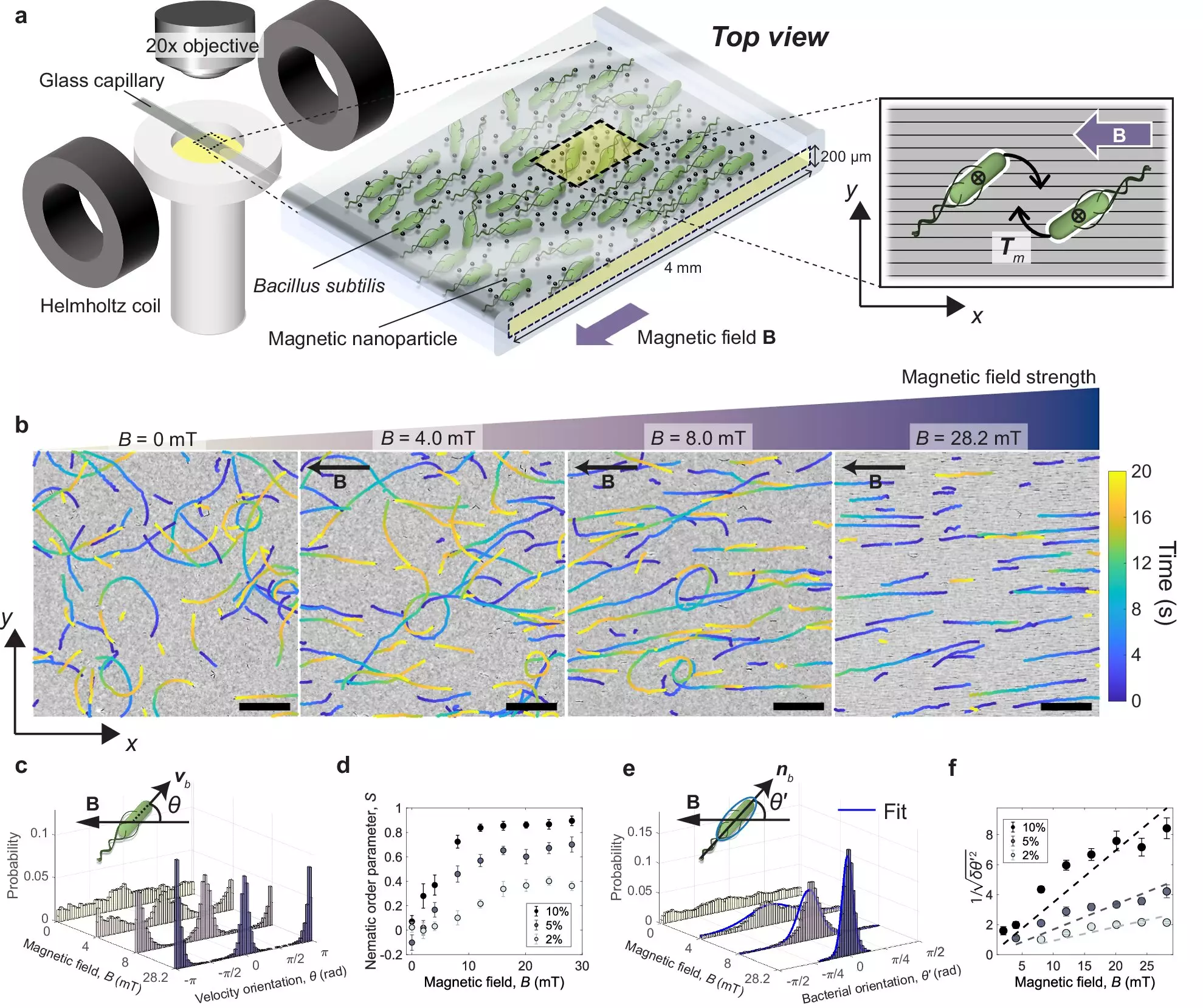The groundbreaking research conducted by Aalto University in Finland sheds light on the incredible power of magnets to control bacterial behavior. Instead of directly interacting with the bacteria themselves, magnets are used to manipulate the alignment of bacteria in a liquid filled with magnetic nanoparticles. This innovative approach not only provides a way to organize bacteria but also opens up new possibilities for research in various fields such as complex materials, phase transitions, and condensed matter physics.
The study, led by assistant professor Jaakko Timonen, reveals that the rod-shaped bacteria are essentially non-magnetic voids within the magnetic fluid. When a magnetic field is applied, the bacteria are induced to align with the field to minimize energy expenditure. This alignment generates a torque on the bacteria’s bodies, pushing them to form orderly rows. Postdoctoral researcher Kazusa Beppu explains that the strength of the magnetic field dictates the degree of alignment, with higher field strengths resulting in more precise organization of the bacteria.
The density of bacteria in the liquid also plays a significant role in the alignment process. Higher population densities require stronger magnetic fields to overcome the turbulence-like effects caused by the swimming bacteria. This phenomenon, known as active turbulence, is prevalent in nature and arises from the collective movements of individual units, such as bacteria or sperm. The unique properties of active turbulence make it an exciting area of research in the field of active matter physics.
While the ability to control bacterial movement may seem like a playful endeavor, the implications of this research are far-reaching. By understanding and manipulating active matter, researchers can explore opportunities in self-sustaining materials, microrobotics, biological engines, and targeted drug delivery on a microscopic scale. The versatility of the magnetic alignment method extends beyond bacterial systems, offering a wide range of possibilities for advancing the study of active matter in various contexts.
Moving forward, the research team aims to delve deeper into the effects of dynamic magnetic fields on bacterial behavior. By introducing rotating magnetic fields, they seek to uncover new insights into the manipulation of bacterial alignment and explore potential applications in other research domains such as phase transitions and condensed matter physics. The pursuit of knowledge in this area promises to revolutionize our understanding of active matter and pave the way for groundbreaking discoveries.


Leave a Reply